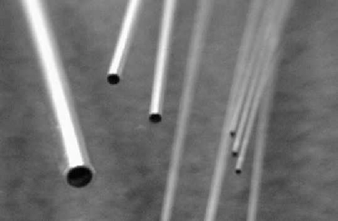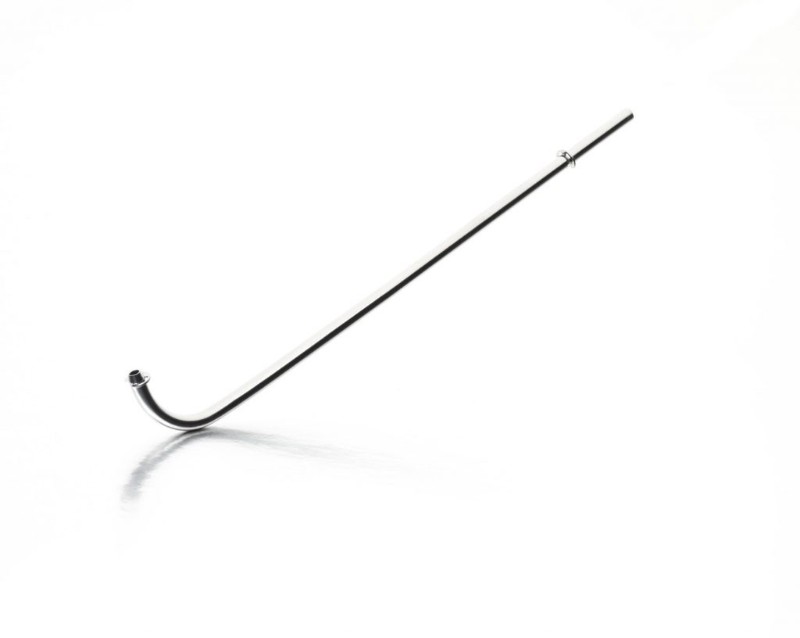Introduction
Since the late 1980’s, the superelastic behavior of shape memory material and in particular, Ni-Ti alloys has been extensively exploited by the medical device industry. Superelastic NiTi has become a material of strategic importance as it allows to overcome a wide range of technical and design issues relating to the miniaturization of medical devices and the increasing trend for less invasive and therefore less traumatic procedures.
The key characteristics of a superelastic material offers both designers and users an interesting compromise between polymers and conventional metals. The “Strength of a metal and the flexibility of plastics” or “Super-spring” qualifiers have often been attributed to superelastic nitinol.
The most important and relevant properties of superelastic nitinol can be listed as follows:
- Advantages relating to the superelastic behavior:
- Large recoverable deformation
- Low permanent set or residual deformation
- High plateau stresses and ultimate tensile strength
- Body temperature within superelastic temperature range (50.8 at% Ni – Ti)
- High potential energy storage capability
- Corrosion resistance similar to stainless steel and titanium alloys
- Biocompatibility
Cold-worked and heat treated to superelastic condition nitinol wires have been used for years to produce dental arches or medical guidewires. The introduction of superelastic tubing has opened new frontiers and an all-new set of design and product capabilities.
One can obviously appreciate the need for a ‘working lumen’ in a variety of applications and fine gage stainless steel tubing or hypodermic tubing has been used extensively in these cases. Nitinol tubing has allowed alleviating many of stainless steel’s intrinsic elastic limitations.

Alloy And Size Availability
The vast majority of all nitinol tubing currently manufactured is drawn from the very typical 50.8 at% Ni alloy composition. This alloy has well documented superelastic characteristics at room and around body temperature making it an ideal candidate for a variety of medical device applications. When the thermal shape memory effect is required, a warmer binary composition (50.6 at% Ni) have also been drawn successfully into small gage hypotubes.
Attempts (on a smaller scale) at drawing ternary alloy compositions were also successful but the market demand has not yet justified larger amounts of efforts in this area therefore these alloys tends to be drawn only on a custom basis and at a higher cost.
Nitinol tubing is typically manufactured from 0.15mm to about 6mm outside diameter (Memry Corp.) but larger sizes are also available on a more limited and customized basis (up to 15mm, Minitubes).
Nitinol tubing is always supplied in discrete length (up to 3.5 meters, Memry Corp.) and in the cold-worked and heat-treated condition.
Finishes include as-drawn and centerless ground outside surface conditions. Optional inside diameter slurry and/or honing treatment are available as well as chemical passivation for enhanced corrosion resistance.
Methods of Manufacture
Nitinol tubing is drawn in a seamless condition usually starting from gundrilled barstock often referred to as hollows.
Typical tube drawing techniques are employed by most manufacturers:- Floating plug
- Hard mandrel
- Sinking (drawn without internal mandrel or plug)
Except from the later, both floating plug and hard mandrel technique require either the plug or the mandrel to be replaced in between draw passes to achieve the subsequent pass and reduction in diameter.
A proprietary technique employed allows to drawn seamless nitinol tubing on a continuous basis. The gundrilled hollow is drawn over a soft metallic mandrel all the way through the process as a composite assembly and the mandrel is never replaced until the very last step when both core (soft mandrel) and the outer shell (nitinol tubing) are de-mated and separated ending with the finished product. From a geometry and characteristics standpoint, this technique allows to achieve (1) a very high level of consistency throughout a lot of tubing, (2) smaller gages of tubing and (3) lower processing costs.
Applications
Besides the obvious working lumen that a tube provides, the superelastic behavior of nitinol offers a wide range of benefits when compared with stainless steel hypotube. The main advantages can be listed as follows:
- Kink and crush resistance
- Flexibility
- Large amount of recoverable deformation
- Generation of constant or low forces over a wide range of deformation
- Energy storage and restoration
These characteristics have made nitinol a material of choice in a large number of medical devices:
Guidewire or catheter shafts
In that case, nitinol is used for its kink resistance and ‘soft’ end-user feel therefore allowing precise placement and delivery through very tortuous paths without losing a good torqueability and pushability of the device.
The tubing lumen can be used as a method of delivering a diagnostic or therapeutic media to a localized site or as a carrier for another device (drug delivery catheter, needles, biopsy devices, laser or optical fiber guides, other guidewires, etc), as an inflation lumen (for an occluding or expanding balloon such as those used in percutaneous transluminal angioplasty for example)
Surgical instruments
In surgical endoscopic procedures, the very large amount of recoverable deformation is primarily the key characteristics seeked in these types of applications. Usually shape-set superelastic nitinol components are constrained under a very high mechanical strain (up to 6-8%) pending insertion in the patient body cavity though narrow cannulae, trocar ports or percutaneous needles where they are deployed and recover completely or in controlled fashion to their original shape.
Such superelastic recovery allows the deployment, steering, bending, twisting, etc of the distal end of the device and the tube lumen can be used as the carrier for an internal actuation member (a cable
that would actuate scissors blades, jaws, etc. for example), a guiding member for another device, a delivery port for a drug or other media.
The flexibility of nitinol tubing has been used in orthopedic bone reamer application, arthroscopic guides, flexible protections for delicate optical or laser-delivery fibers, needles, biopsy devices, etc.
Stents and laser-cut structures
One of the current largest applications for nitinol tubing is for the intraluminal stenting of blood vessels and other ducts.
Although competing tubular wire-frame stents are available, most stent designs dictates the use of tubing as starting material. Superelastic nitinol tubing is increasingly employed in self-expanding design as it offers a much greater resilience and recovery to external pressures which can be deemed critical in some applications like carotid stenting or when arteries are very superficial or going through extensive bending and other mechanical stresses (joint articulations, etc) due to body motions.
Nitinol stents are most commonly laser cut in the constrained condition (delivery size) and then heat treated (shape-set) to their expanded diameters. Post processing include electrochemical or mechanical finishing in order to maximize hemodynamic conditions, enhance fatigue and corrosion resistance, minimize clotting and cell proliferation. The stents are deployed and allowed to self- expand in the vessels via percutaneous catherization. The deployed stent is prevented to completely recover its original shape (very slight oversize compared to vessel diameter) and exerts a very gentle outside pressure against the vessel wall to keep it open and minimize its recoil. The low modulus of superelastic nitinol along with its low unloading plateau stress (adjusted by the thermo- mechanical processing of the material) are among the key mechanical characteristics desired in such applications. It is believed that self-expanding superelastic nitinol stents will play a key role in the safe and less invasive or intraluminal treatment of carotid, aortic and other peripheral vessel disease. It is also foreseen that due to the catheter miniaturization that the material allows, further stent developments and applications will tackle very small distal and inter-cranial lesions.
Conclusion
Since the inception of this technology 10 years ago, the processing and availability of superelastic nitinol tubing have drastically increased allowing its use across a wide variety of medical device
specialties. From catheters to self-expanding stents, from guidewires to orthopedic and other devices, superelastic tubing has become a key element in an engineer’s toolbox when a working lumen must be combined with a very high level of elastic shape recovery, kink resistance, low modulus and force generation are required.
The material is ideally suited for medical device applications due to its exceptional superelastic behavior at or near body temperature and has challenged the long established stainless steel hypotubing in many critical cases.
A typical non-linear behavior leading to design and manufacturing complications, processing and post-processing difficulties and high cost have limited its successful introduction in highly cost- driven commercial or less critical applications.The end-product specification or requirements associated with a sound assessment of the manufacturing techniques to be used for its fabrication shall dictate the actual material requirements such as mechanical characteristics, transformation temperatures, sizes, thermo-mechanical conditions, surface conditions or combinations therefrom. These material requirements shall then be compared with nitinol tubing suppliers product specifications and a fit must be established or a compromise reached..

